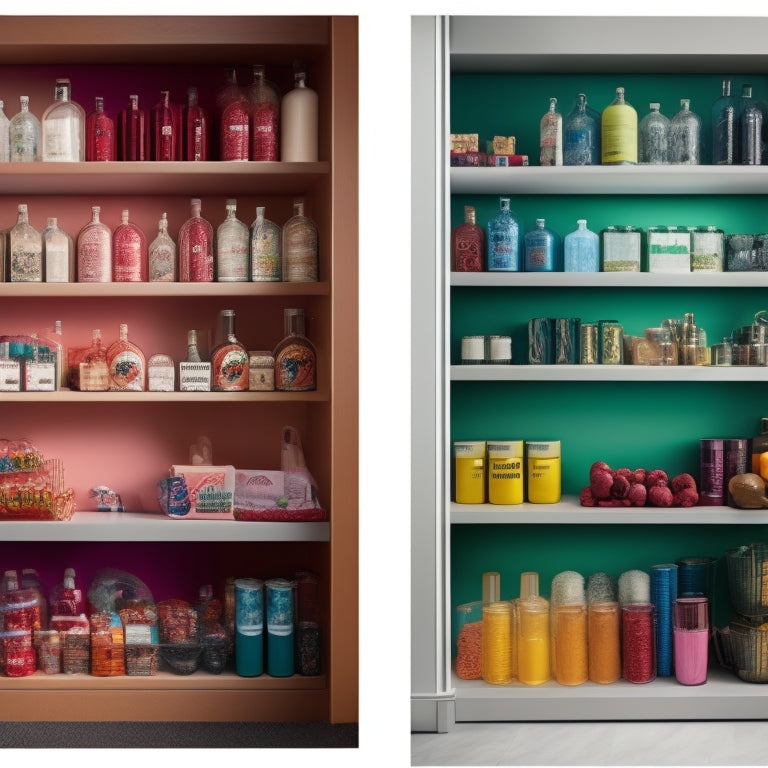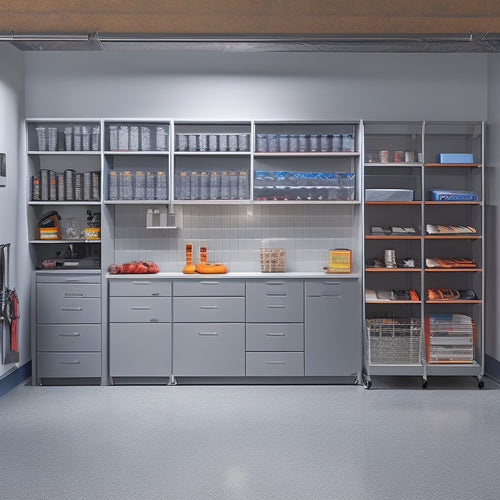
Maximizing Sales Success With Planogram Precision
Share
Accurate planogram implementation is pivotal in maximizing sales success, as it optimizes product placement, streamlines inventory management, and enhances customer experience. By leveraging advanced analytics, retailers can tailor product assortments to specific store profiles, allocating shelf space efficiently and reducing waste. Data-driven insights enable optimized pricing strategies and supply chain management, resulting in increased revenue and reduced logistics costs. To harness the full potential of planograms, it is essential to understand the essential components and overcome common implementation challenges. A deeper understanding of these complexities can reveal the key to sustained sales growth and competitiveness in the market.
Key Takeaways
• Advanced analytics and data-driven insights enable retailers to create optimized planograms, driving sales and improving customer experience.
• Efficient shelf space allocation and product placement are critical for maximizing sales and revenue in retail stores.
• Assortment optimization and pricing strategy alignment are key to minimizing waste and increasing revenue through precise planogram execution.
• Implementing planograms with precision requires reliable data, staff training, and process integration to overcome common challenges and obstacles.
• By leveraging planogram essentials, retailers can boost sales, enhance customer satisfaction, and gain a competitive edge in their respective markets.
Retail Success Foundations
In today's competitive retail landscape, a well-executed planogram is a fundamental pillar of retail success. It directly impacts sales performance by optimizing product placement, maximizing shelf space, and enhancing the overall customer experience.
By leveraging store profiling, retailers can create a tailored product assortment that caters to local customer preferences, driving sales and loyalty. Effective store profiling involves analyzing demographic data, shopping patterns, and sales trends to curate a product mix that resonates with the target audience.
This data-driven approach enables retailers to allocate shelf space efficiently, ensuring the right products are stocked in the right quantities, resulting in increased sales and reduced waste. By mastering store profiling and product assortment, retailers can lay the foundation for long-term success.
Precision Planning Strategies
What sets high-performing retailers apart is their ability to leverage advanced analytics and machine learning algorithms to inform their planning and buying strategies, thereby ensuring that every product and display is precisely tailored to meet the unique needs of their target audience. By applying data analytics to inventory management, retailers can optimize their product assortment, reduce stockouts, and minimize overstocking. This precision planning approach enables retailers to:
| Strategy | Benefits | Data Analytics Application |
|---|---|---|
| Assortment Optimization | Improved sales, reduced waste | Product demand forecasting, customer preference analysis |
| Inventory Management | Reduced stockouts, minimized overstocking | Real-time inventory tracking, supply chain optimization |
| Display Planning | Enhanced customer experience, increased sales | Sales data analysis, customer behavior analysis |
| Pricing Strategy | Optimized pricing, increased revenue | Competitive pricing analysis, demand elasticity analysis |
| Supply Chain Optimization | Reduced logistics costs, improved delivery time | Supply chain network analysis, route optimization analysis |
Planogram Essentials Explained
By deconstructing planograms into their constituent elements, retailers can better understand the intricacies of this critical retail strategy and maximize its full potential to drive sales, enhance customer experience, and inform category management decisions.
At its core, a planogram is a visual representation of a store's product assortment and layout, designed to optimize shelf space and boost sales.
-
Planogram benefits: By leveraging planograms, retailers can reap numerous benefits, including optimized product placement, maximized shelf space, improved customer experience, enhanced store layout, and boosted sales.
-
Industry examples: Planograms are widely used across various industries, such as consumer goods, cosmetics, pharmaceuticals, retail, tobacco, and wine & spirits, to name a few.
-
Planogram essentials: Understanding the essential components of planograms, including floor plans, wall plans, pegboard plans, shelf plans, and endcap plans, is important for effective retail execution and maximizing planogram benefits.
Shelf Optimization Techniques
Accurate shelf optimization techniques are essential for retailers to realize the full potential of their planograms, as they directly impact product sales, customer satisfaction, and overall retail strategy.
Optimizing shelf space is key to maximizing product visibility, which in turn drives sales. By leveraging data and analytics, retailers can identify the most profitable product placements, ensuring that high-demand items are prominently displayed.
Effective space utilization is also vital, as it enables retailers to stock a wider range of products, increasing customer choice and satisfaction.
Overcoming Planogram Challenges
Despite the numerous benefits of planograms, their successful implementation is often hindered by common challenges that can greatly impact retail performance if left unaddressed.
To overcome these obstacles, retailers must prioritize three key areas:
-
Staff training: Ensuring that in-store staff understand the importance of planogram execution and are equipped with the necessary skills to implement them accurately is essential.
-
Data accuracy: Reliable and accurate data is fundamental for effective planogram implementation, enabling retailers to make informed decisions about product placement and inventory management.
-
Process integration: Seamlessly integrating planogram implementation into existing retail operations is crucial to minimize disruptions and ensure a smooth rollout.
Frequently Asked Questions
How Often Should Planograms Be Updated to Reflect Changing Customer Trends?
To stay ahead of the curve, planograms should be updated quarterly, leveraging customer insights and trend analysis to guarantee that product assortments align with shifting consumer preferences, thereby driving sales and maintaining a competitive edge.
Can Planograms Be Used for Online Retail Spaces and E-Commerce Platforms?
In the digital landscape, planograms can be applied to online retail spaces and e-commerce platforms, optimizing virtual layouts and digital shelves to enhance customer experience, improve product discoverability, and increase online sales through data-driven merchandising strategies.
What Is the Ideal Balance Between Product Variety and Shelf Space Allocation?
Shoppers' gaze typically inclines 15-30 degrees below eye level, highlighting the importance of ideal shelf space allocation. To achieve Shelf Harmony, retailers must strike a balance between product variety and allocation, avoiding Product Saturation, which can lead to a 20-30% decrease in sales.
How Do Planograms Account for Seasonal or Promotional Product Displays?
Seasonal and promotional product displays are accounted for in planograms through holiday theming and visual merchandising strategies, ensuring ideal shelf space allocation and product placement, driven by data analysis and sales forecasts to maximize sales lift and customer engagement.
Can Planograms Be Integrated With Other Retail Technologies, Such as Inventory Management Systems?
As retail's symphony conductor, planograms harmonize with inventory management systems, supply chain orchestration, and data analytics to create a seamless melody of optimized product placement, ensuring synchronized sales success and minimizing discordant stockouts.
Related Posts
-

Building a Garage Storage System With Built-Ins
You're about to build a garage storage system with built-ins that fits your unique needs, starting by evaluating your...
-

3 Key Steps to Streamline Your Workshop Organization
You're likely wasting 30% of your workshop's productivity and profitability due to disorganization, a common problem ...
-

What Are the Advantages of a Wooden Tool Box
You choose a wooden tool box, you're not only getting a reliable storage solution, but also a long list of benefits t...


